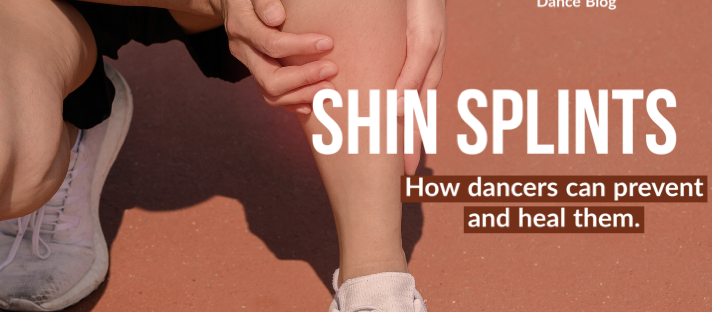Hello From The Top Family! We hope you’re doing oh-so well this Friday. As dancers, we know that injuries can be a common occurrence from time to time and one of those injuries are those pesky shin splints. The irritating tinge of pain that can surface on your shins can be tedious, uncomfortable and can even slow you down for a bit. That’s why today we are going to be talking about what causes shin splints, how to prevent them and how to go about the healing process if you happen to be dealing with them. Let’s get right into it!
Shin Splints Cause
The cause of shin splints is actually very simple. Shin splints can come about during vigorous activity and repetitive stress on the muscles, tendons and tissues that surround the shin bone. Symptoms of shin splints may include aching down the front of the leg, sensitivity to touch and extra irritation when active.
Ways that dancers can prevent shin splints
Now that we have covered the cause of shin splints, let’s talk about a few ways that we can prevent them, shall we?
- Utilizing Your Plie
When plies are talked about in terms of prevention, it’s usually focused on the protection of our achilles tendons, which is equally as important. However, a good use of our plie will also prevent shin splints as well. Beginning things like turns, leaps and petite allegro with a nice, deep plie and ending them in the same manner will allow you to ensure that your shins don’t take on any abrasive impact as you prep and land, which we will get into more later.
- Proper Alignment In Stretching
Shin splints are one of the main reasons why dance instructors advocate to make sure your knee is behind your ankle during stretches like lunges. Pushing over your knee will cause strain on your shins and knees due to your body weight basically resting over top of them in this rather unnatural position. However, proper alignment will ensure proper weight distribution, which will result in extra protection. So be sure you’re aiming for depth in your lunges instead of pushing forward to help prevent extra stress on our shins.
- Keeping Light On Your Feet
Another way to prevent shin splints is by keeping light on your feet. Pulling up out of your hips and/or simply just balanced weight distribution will help alot with allowing you to stay light on our feet, which will create softer landing during leaps and petite allegros. Once again, our main goal is to protect our shins from abrasive impact. Even when performing hard hitting choreo it is important to still be mindful of your weight distribution and your impact of movement. Even in performing, it’s all about taking care of our bodies and staying safe.
Healing Shin Splints
Though it may sound like a very played out answer, the best way to heal shin splints is to take it easy or downright rest if you have to. If the pain of the shin splints is severe, it may be beneficial to sit out and watch for just a few classes, as you want to be sure to not take your injury from bad to worse. If the pain is mild, you may opt to also sit out for a few classes or just simply sit out during specific portions of the class to ensure that you don’t further your injury. And as always, deep heating rubs and over-the-counter pain medications like Tylenol are also great healing aids when dealing with inflamed muscles and joints. Use these before class or when you get home from class, and you will definitely feel a difference within your healing journey.
Well dancers, that will do it for today’s blog post! We hope that this post was able to help you understand, prevent and help heal those pesky little shin splints that we can experience from time to time. It’s always our goal to make sure our FTT Family stays safe and as injury free as possible throughout our dance journey. As always, we wish you a wonderful weekend filled with love, light and remember…
Keep dancing!
Lexi

